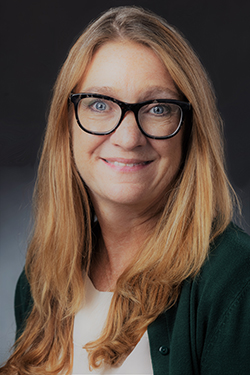October, 28, 2021
IMLS staff interviewed chief officers of State Library Administrative Agencies (SLAAs) to discuss their response to the pandemic, including the use of IMLS American Rescue Plan Act (ARPA) funds to the states. These interviews have been edited for length and clarity. Because of the infrastructure of the Grants to States program and the agility of SLAAs, $178 million was rapidly rolled out to benefit libraries and their patrons across the country, and in some cases, museums, and tribes. This post is part of a series and features IMLS Senior Library Program Officer Dennis Nangle interviewing Robin Westphal, the Missouri State Librarian. Read more about the Missouri State Library’s priorities in the state profile for Missouri.
Dennis: What approach have you taken with the American Rescue Plan Act stimulus funds, including mechanisms you have used to distribute them?
Robin: We had three main areas that we focused on with the ARPA funds: eCollection support, statewide projects, and our subgrants.

For eCollection support, we already have a large eCollection consortium that has about 112 of the 160 library districts in it, most of whom are small rural libraries. Using ARPA funds, we invited libraries who were not part of the consortium to become involved, with us offering to pay for the initial costs of joining the consortium, with the promise that we would look at being able to subsidize ongoing costs in the years following. Our consortium is good for small libraries, because of the buying power and the robust shared collection. We also infused some funds into a newly-formed school library consortium to improve their collection and entice other school libraries to join.
The second part of how we approached the ARPA funds was statewide projects with targeted offerings that fit into the goals of the pandemic. We used ARPA funds to provide an online high school product which will allow Missourians to obtain an actual high school diploma. More e-resources we’re providing statewide include homework assistance, job help and veterans’ assistance with live interactivity. We also wanted to remain focused on traditional literacy, so we are offering a reading enrichment online program for students that will be suitable for both libraries and schools.
The third component of how we’re spending ARPA funds is in the area I think we do best: our subgrant program. We’re seeing funds go toward self-serve book lockers and self-checkout machines, but we're also seeing some unique projects. One library is doing wellness rooms—these rooms will contain the necessary equipment to be able to do telehealth appointments, but the library is also making kits available that will provide the community with blood pressure machines, stethoscopes, and similar tools. When the doctors ask patients questions about their vitals in a virtual environment, the patient will be able to answer.
Another library is using ARPA funds to add stops for My Mobile Market. This is a converted city bus that provides fresh fruit, vegetables and other staple food items, and makes stops in the food desert areas of St. Louis (many of these stops are library parking lots).
With the subgrants alone, we're reaching about 79% of Missouri’s population, but when you factor in the statewide projects and the e-resource projects, there is potential to impact every Missourian. With great money comes great responsibility, and honestly, we had to think of it that way with these stimulus funds. We want to be innovative, but also then be mindful of some of the immediate needs that are our libraries are seeing.
Dennis: Tell us about your experiences in working with new or existing partners, and what kind of resources you've been able to tap into because of these partnerships?

Robin: A great unofficial partnership that we've been able to develop is with the Department of Elementary and Secondary Education (DESE), because we had a chance to informally consult with them about many statewide project decisions. We would ask them how they felt about online high school and literacy enhancement products, and if it competed with anything they were already providing to the state.
We also developed a partnership with the Department of Economic Development. They had their own CARES stimulus funds that were specifically targeted to libraries, which complimented the IMLS CARES funds wonderfully. Partnerships with both agencies are going to continue past CARES, ARPA, and the pandemic. This has been a great opportunity for us to all work together and for them to see what it is that the State Library can do - not just for libraries - but for job seekers, and students of all ages.
Dennis: What challenges and opportunities have you observed since the pandemic?
Robin: Everyone’s job at the State Library has changed as we try to adapt to the ever-changing needs of our patrons as well as keep up the morale of library directors and their staff. I need to make sure that we're focusing on the internal struggles that can emerge when providing this kind of support to everyone across the state. We recognize that while we may not be on the front lines, adapting to the needs of our patrons has been extremely difficult for us as well. But I think we're all better employees; I think we're a closer-knit team because of that.
An opportunity that has arisen is being able to talk with library directors that we had a hard time connecting with before. And as their need for us and for guidance has increased, it’s given us the opportunity to say, “hey, we've noticed that you've never written a summer reading program grant…” I think this is about adapting, evolving and being even better, and while these are steps we've been forced to make, they've all been, in my opinion, the right steps.